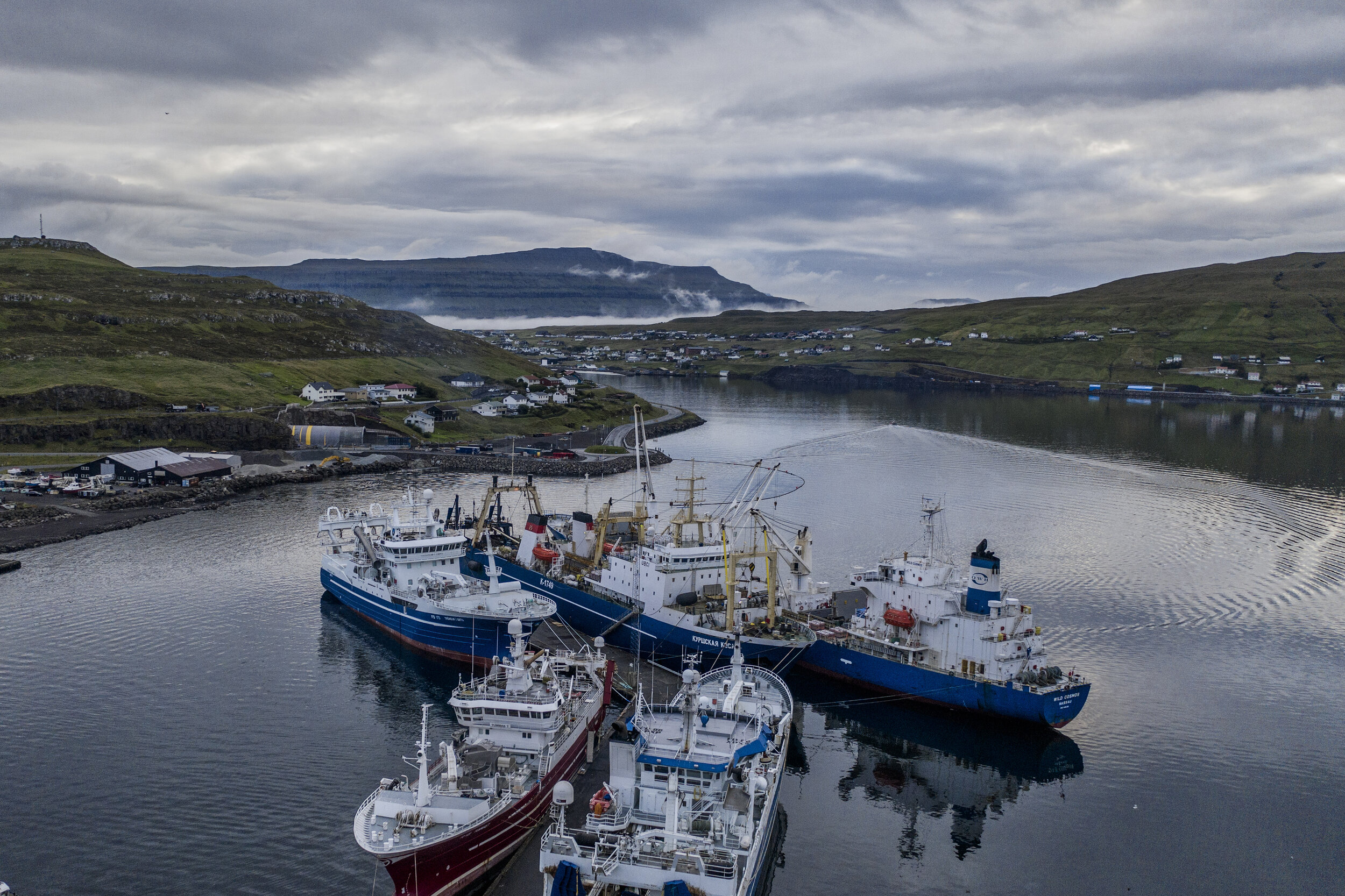On the Remote Faroe Islands, Love in the Time of Facebook
Filipinos and Thais now make up the largest ethnic minority in an insular Nordic community where nearly everyone had been related.
Text By Bonnie Tsui, Photographs by Laetitia Vançon.

TORSHAVN, Faroe Islands — Back in February, Darlene Joy Lapore Jacobsen’s introduction to the Faroe Islands, her new home, involved landing at the airport in the middle of a snowstorm. It was her first trip outside the Philippines, where she was born. She said she moved there for love.
“My best friend’s older brother works on a cargo ship, and he gave my Facebook contact to his co-worker Jacob,” she said, referring to her husband of a few months, Jacob Edmund Jacobsen, a boatswain who spends six weeks at a time at sea directing cargo on container ships. “From the day we first started chatting, we never stopped.” After six months of correspondence, Mr. Jacobsen flew to the Philippines to woo her in person. The couple now live in the small village of Strendur, population 900, about an hour from the capital, Torshavn. At a time of growing anti-immigrant sentiment in Europe and the United States, the isolated Faroes stand as an exception, welcoming new arrivals with language courses and access to free education and health care. Many are women, who are arriving in growing numbers primarily from Asian countries. In recent years, young people, especially women, have left the insular Faroes, often to attend university in Europe and elsewhere or for job opportunities. The trend became so statistically dire that it led the prime minister to declare a “gender deficit” and Faroese men to look elsewhere for partners, including in the Philippines and Thailand.
While some of the Asian women have left challenging economic conditions in their home countries, they say the decision to live on a remote northern island is their own. “It’s very common nowadays that you meet someone online,” Mrs. Jacobsen said. “And it’s absolutely no big deal for me. Wherever or no matter how far, if you love each other truly, distance is nothing.” At the center of a North Atlantic triangle formed by Iceland, Norway and Scotland, the Faroe Islands are 18 rocky outcrops connected by bridges, ferries and undersea tunnels. Just 540 square miles, the self-governing nation officially lies within the Kingdom of Denmark.
The archipelago is Scandinavian starkness distilled: a subpolar oceanic climate, steep cliffs and fjords, beauty and ruggedness, home to abundant salmon, sheep and seabirds. Residents of the remote islands — with a population of just 50,000 — descended from a gene pool so small that nearly everyone is genetically related. The boom in marriage migration began in earnest about a decade ago, says Runa Preeti Isfeld, a scholar at the University of the Faroe Islands who recently completed her dissertation on the topic. But issues of integration are only starting to enter public discourse. “There has been a homogenization of these women, a stereotyping that they are poor and uneducated and that’s why they are coming here,” Dr. Isfeld said. “But these women are all different from each other, and they come from all different backgrounds and how they met their husbands: through internet dating, through friends and families who were already living here in the Faroes, through husbands who came as tourists to their home country.” There are now a few hundred Asian “marriage migrants,” enough to constitute the largest ethnic minority in the Faroes.
As of January, nearly 1,500 non-Nordic citizens resided in the Faroes, representing about 3 percent of the total population. The Philippines, Thailand and Romania make up the three largest groups, though Romanians are typically there on work permits, said David Im, the integration coordinator at the Faroese immigration office. “In the last five years, marriage migration has been growing steadily. And because it’s a small country, even small numbers make a big impact,” said Mr. Im, who helps newcomers to learn the language, find jobs and secure government services. While most young people speak English, older residents in the smaller hamlets do not. Faroese, which is closely related to Old Norse, is the primary language taught in schools, with Danish and English instruction introduced in higher grades. “It’s a big challenge for a lot of Thais” who don’t speak English well when they come to the Faroes,” said Rossarin Wannathep, 41, who works as a lab technician at the national hospital.
Originally from northern Thailand, Ms. Wannathep attended college in Denmark and speaks Danish, English and Thai, and is proficient in Faroese. She met her Faroese partner while working in Greenland; three years ago, they settled back on the Faroe Islands with their two young daughters. “In my workplace, for example, our instructions are in English and Danish, and we speak Faroese with patients,” she said. “A lot of people come from Thailand with an advanced education but can’t use it here.”
Though life there can feel lonely when you are accustomed to a city of more than a half-million people, Mrs. Jacobsen says that her local extended family makes sure she feels welcome; she often visits with her siblings-in-law and her new stepchildren, who all speak English. And she has the larger Filipino community to lean on. On her island of Eysturoy, Mrs. Jacobsen has joined a group chat of people from the Philippines. It’s how she met Lea Mangubat Joensen, who also happens to be from her home city in the Philippines. Mrs. Joensen moved here in October 2018 and works in a fish-processing plant, where many Asian immigrant women find work; her husband, Kari Joensen, is a cook on a fishing vessel. The couple met on what Mrs. Joensen described as a Facebook dating group for men and women. Mrs. Joensen, 26, says she was so occupied with studying and finding a good job — she has a degree in accounting technology and worked as an accounting clerk in the Philippines — that she did not have time to date. “Then I saw my friends, classmates, having their own families and kids,” she said. She made her first dating profile, and two days later Mr. Joensen, who is 35, messaged her.
Far-flung matches like theirs may seem to be the merging of strikingly different worlds. But the couples interviewed say they find commonalities in their shared emphasis on community and family. “We’re like other couples. We are not perfect, and we do have misunderstandings at times,” Mr. Jacobsen said, speaking from a ship off the northern coast of Norway. “We’re in an interracial relationship, so culture is different and we have our own unique ways, but as time passes by you get used to it and you understand it better day by day.” Mrs. Jacobsen agreed. “Both of us are making an effort to sensitively resolve differences, taking into account cultural considerations,” she said. “It surely takes time, but it surely gets better.” Dr. Isfeld says that the Faroese government’s efforts to formalize language and social programs to support migrants will become critical as more second-generation children enter schools. “These issues will be more visible when the migrant children grow up — there will be a third culture here,” she said. “We will add something more with other communities moving here. And because the Faroese language is special and so important to people, having a strong language school for migrants should be a priority.”
For years, politicians have busied themselves discussing how to attract Faroese women back from abroad, while Dr. Isfeld said they should focus on the women from other countries who are building their lives here. “The question should be ‘How do we make it better for them?’” she said.































